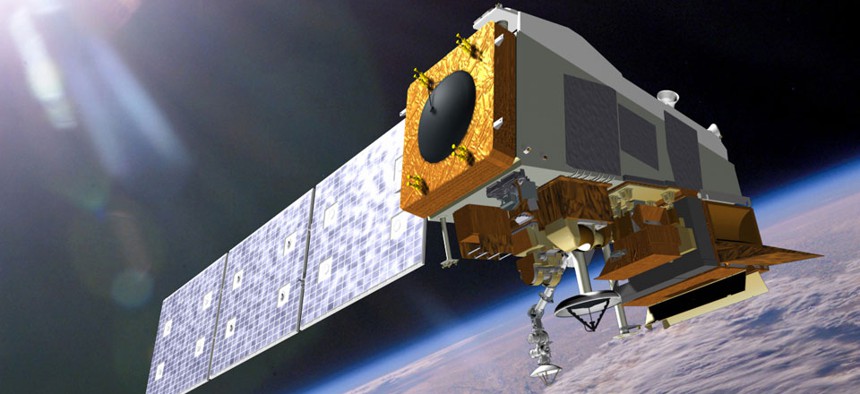
NOAA's Joint Polar Satellite System NOAA
Watchdog Warns NOAA on Delays in Upgrading Weather Satellites
GAO critiques management of polar, geostationary and environmental systems.
Six months after placing weather satellite upgrades on the government’s high-risk list, the Government Accountability Office weighed in on Thursday with a pair of reports nudging the National Oceanic and Atmospheric Administration to improve its management and data collection affecting vital systems modernization.
Efforts to create the next generation of three types of satellite systems -- joint polar, geostationary and environmental -- might be in danger of missing deadlines and in the worst case could cause a gap in weather forecasting coverage in the next several years. The technical systems are run by NASA and the Defense Department.
In the case of the Joint Polar Satellite System, GAO found that NOAA had made “noteworthy progress” by reducing the program’s cost estimate from $12.9 billion to $11.3 billion by refocusing on weather products. But the program has fallen behind schedule in validating readiness of satellite products, and managers are not properly tracking whether key users are taking full advantage of the system’s capabilities. “Until NOAA establishes a comprehensive [contingency] plan,” auditors wrote, “it may not be sufficiently prepared to mitigate anticipated gaps in polar satellite coverage.” The auditors warned that a failure to improve management could “decrease the confidence that JPSS-1 will launch by March 2017."
On the geostationary systems, GAO said NOAA had made progress in building flight and ground components to stay within a $10.9 billion life cycle cost estimate. But it faulted managers for delayed milestones, technical problems and poorly maintained component schedules. For example, “NOAA decreased the accuracy requirement for the hurricane intensity product and decreased the timeliness of the lightning detection product,” GAO wrote. “However, key satellite data users were not fully informed about changes and did not have a chance to communicate their concerns about the impact of these changes on their operations.
The expected October 2015 launch date, program officials acknowledged, “may be delayed by six months.”
In both the polar and geostationary systems, NOAA officials generally agreed with GAO’s recommendations.







